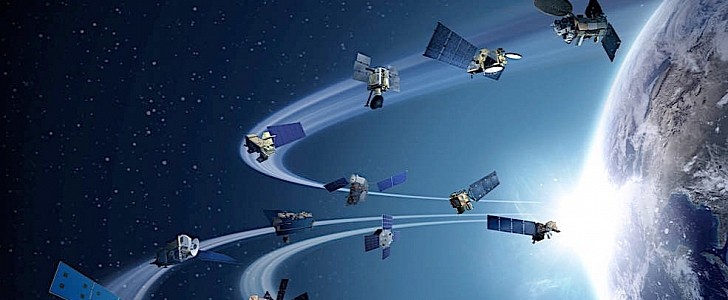Now that several private companies have begun launching their own spaceships into orbit, the number of missions departing Earth is about to increase. At the same time, given the growing number of satellites various organizations are placing in orbit, collisions could become a real threat.
Take SpaceX, for instance. Elon Musk’s space company plans to launch a total of 1,500 satellites from the Starlink constellation by the end of the year (600 of them are already in place). That could cause significant issues with the spacecraft and satellites NASA itself is operating or planning to launch, including with SpaceX’s help.
To get around that issue, NASA announced at the end of last week it signed an agreement with SpaceX to ”formalize both parties’ strong interest in the sharing of information to maintain and improve space safety.”
As per the agreement (which you can read in full at this link), SpaceX will have to autonomously or manually move its Starlink satellites out of the way to allow NASA’s satellites and other spacecraft to operate uninterrupted “from a collision avoidance perspective.”
That pretty much means the space agency’s hardware will not maneuver out of the way unless otherwise informed by SpaceX. That should ensure only one party is responsible for moving stuff from place to place in orbit, thus reducing the risk of the two accidentally maneuvering into each other.
“Society depends on space-based capabilities for global communications, navigation, weather forecasting, and much more,” said in a statement acting NASA Administrator Steve Jurczyk. “With commercial companies launching more and more satellites, it’s critical we increase communications, exchange data, and establish best practices to ensure we all maintain a safe space environment.”
In addition to the deal signed with SpaceX, NASA plans to release a so-called Spacecraft Conjunction Assessment and Collision Avoidance Best Practices Handbook (available here) that should help all those doing business in orbit prevent unwanted incidents.
To get around that issue, NASA announced at the end of last week it signed an agreement with SpaceX to ”formalize both parties’ strong interest in the sharing of information to maintain and improve space safety.”
As per the agreement (which you can read in full at this link), SpaceX will have to autonomously or manually move its Starlink satellites out of the way to allow NASA’s satellites and other spacecraft to operate uninterrupted “from a collision avoidance perspective.”
That pretty much means the space agency’s hardware will not maneuver out of the way unless otherwise informed by SpaceX. That should ensure only one party is responsible for moving stuff from place to place in orbit, thus reducing the risk of the two accidentally maneuvering into each other.
“Society depends on space-based capabilities for global communications, navigation, weather forecasting, and much more,” said in a statement acting NASA Administrator Steve Jurczyk. “With commercial companies launching more and more satellites, it’s critical we increase communications, exchange data, and establish best practices to ensure we all maintain a safe space environment.”
In addition to the deal signed with SpaceX, NASA plans to release a so-called Spacecraft Conjunction Assessment and Collision Avoidance Best Practices Handbook (available here) that should help all those doing business in orbit prevent unwanted incidents.

